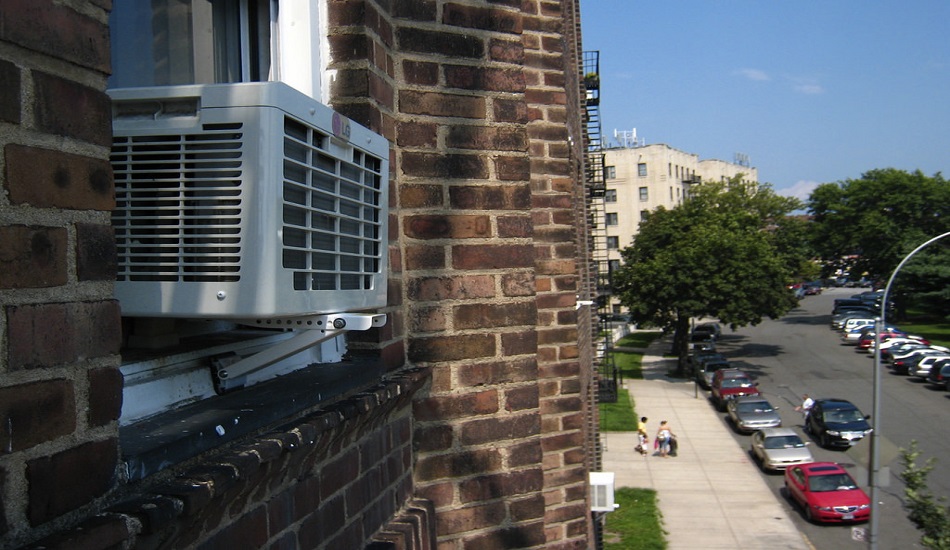The market share for air conditioners in India has always seen a steady growth as it is becoming a necessity in this hot weather condition. The perception of people towards air conditioner has changed from being a luxury product to a necessity. Accounting for a revenue share of almost 40% in 2015, the commercial segment dominated the overall air conditioning systems market. According to the report, “India Air Conditioning Market Outlook, 2021”, India’s air conditioning market was growing at an annual rate of 6.82% over a period of five years and is projected to grow annually at around 10.2% during 2015-2021. The focus of most manufacturers of air conditioning systems is energy efficiency.
AC Segments:
The Indian air conditioning market is divided into two major segments- commercial air conditioners (VRF, Chillers & Others) and Room Air Conditioners (Split and Window air conditioners). Room air conditioning system accounts the major revenue followed by central air conditioning system. Over the last few years, the room AC industry has gradually shifted towards more energy-efficient models as customers are becoming aware of the lifetime costs of ACs. Hence, 4-Star and 5-Star ACs are selling faster along with the inverter ACs. Consumers are considering the lifetime cost of a product than just its initial cost. The split air conditioners segment is the highest revenue contributor followed by chillers and VRFs. A few years ago, the market value of window AC had witnessed a continuous degradation, due to several factors like lower energy efficiency and decreasing price gap as compared to that of split AC. Many of the leading companies, for example, Samsung, LG and Panasonic have stopped producing window AC and increased the rate of production of split AC and other technologically advance ACs like inverter AC. While other companies, for example, Blue Star, Voltas, Godrej etc have decreased the production of the window AC. There has been a clear shift towards five-star and inverter ACs.
Industry point of view:
Haier India President Eric Braganza said toDNA, “We can see a shift or a trend from preferring window ACs to split ACs, earlier the ratio was 50:50, wherein now the trend has skewed towards 70:30 across all the brands or competition.” When Samsung decided to stop the production of window AC, Rajeev Bhutani, Vice President, Consumer Electronics, Samsung India Electronics mentioned to DNA website, “Customers want their AC to look aesthetically good and run at minimum noise levels. The new trend of floral pattern has also made split ACs the first choice for customers.”
Market leader LG says that the window segment is at an inflexion point where there is no innovation possible and the entire market would shift to splits within three years.
Last year, 65% sales came from split ACs, 20% came from the window and the remaining 15% came from the inverter AC. However, this year the shares of inverter ACs are expected to be doubled, hence decreasing the sales rate of window ACs. Companies have started offering inverter ACs at low prices around Rs 30,000. This has made a lesser price gap between the inverter AC and the window AC. The main trigger for consumers moving towards split ACs is the reduction in price differential.
Outlook:
However, this does not mean that window AC would disappear. Voltas says it may be a shrinking segment but the base is still quite large. There are still many buyers who are moving from coolers to ACs for the first time. Pradeep Bakshi, executive VP and COO, unitary cooling products, Voltas, said to Business Standard sometime back, “With the category witnessing an exponential penetration growth in the last two years and the entry of new brands, windows as a segment provides opportunities to tap into the first time buyers in tier II and III markets.”
Recently, the Window Air Conditioner market has witnessed some technological advancements like increased power efficiency and lower power consumption. The global window air conditioners market is gradually reviving back. The environmental concerns and energy efficiency has LED to the trend for star labelling and standardising the window air conditioners. The major application of Window Air Conditioners has been witnessed in the residential and commercial sector. The increase in infrastructure development in both residential and commercial sector is contributing towards the window AC market. The limitations of portable AC are being replaced by window AC.
The existence of window AC in the next five years is however uncertain. If it can overcome some of the challenges like efficiency, noise cancellation, price and limitation of space, the window AC market can get back on track.


